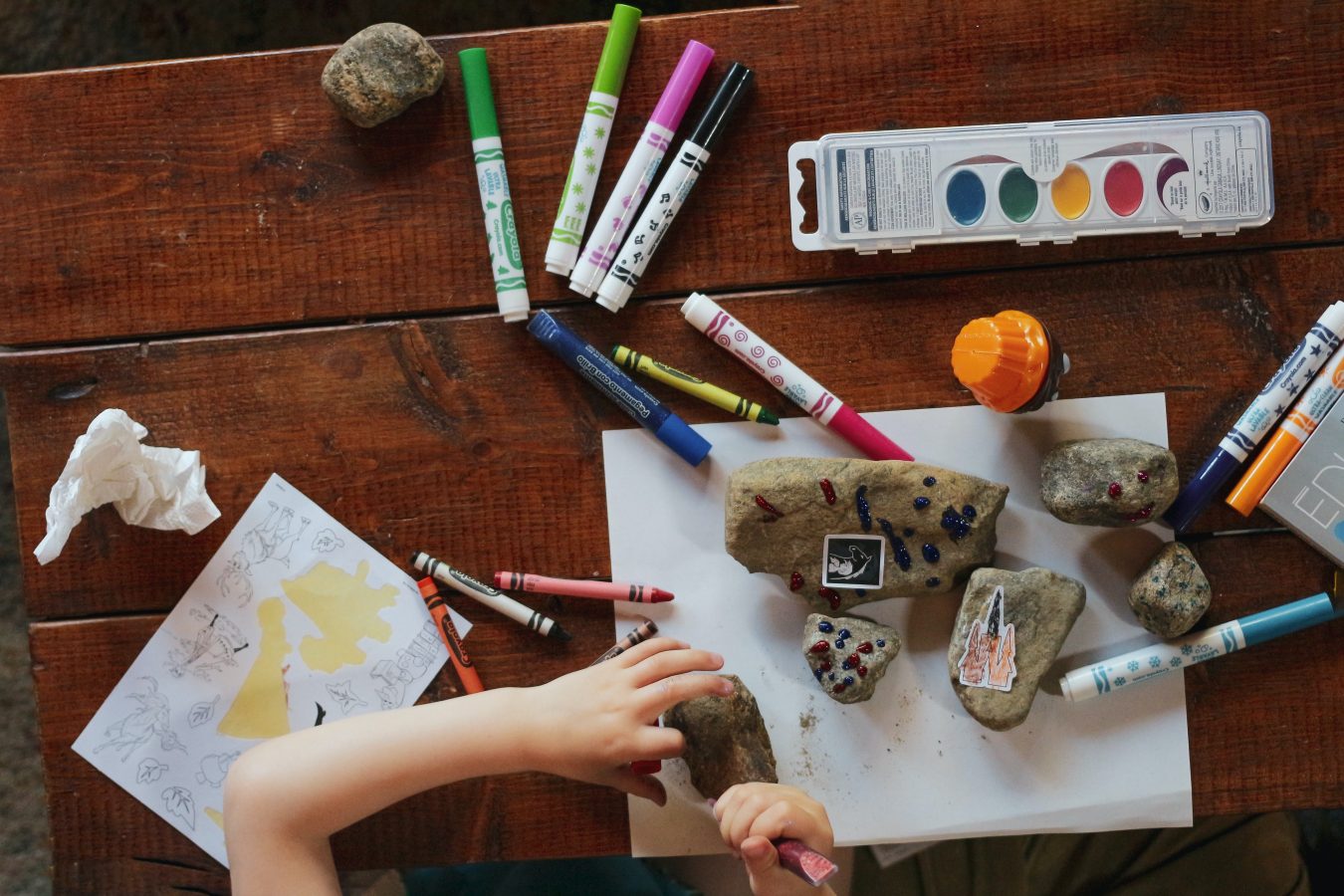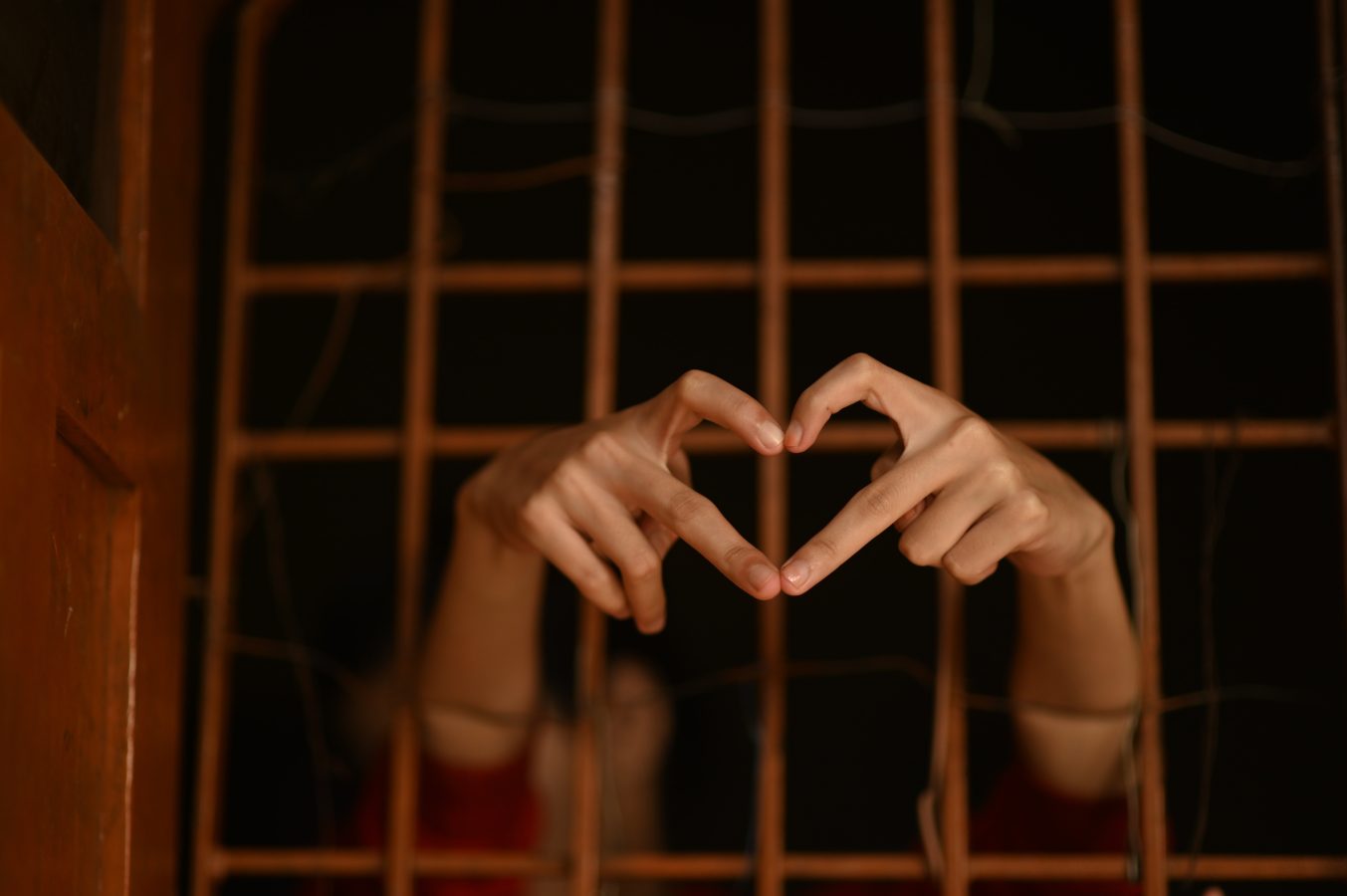I sat in the backseat of the car, bobbing up and down to see if we had reached the San Joaquin Train Station. I slowly peeked out the window to see a swarm of people as our car halted. In the distance, I spotted my dad waving his hand in broad strokes. I screamed to my uncle, “THERE HE IS!” I impatiently propped the door open and dashed toward him as tears flooded his eyes, touching my face in disbelief that I was there. This was the first time I saw my dad in months since he was released from the local jail. As I looked at him closely, he looked unrecognizable; he had shed several pounds, spoke timidly, and wrapped his arms around me in fear of letting go. I paused, looking at him from the corner of my eyes, and thought, “Who is this? Will life ever be like before Papa went to jail?” This moment remains welded into my memory because it was more damning than when I learned my dad was arrested. This memory is one of the many that tells a larger story about the social, economic, and mental hardships faced by children of incarcerated parents (COIP).
My story is not unique but rather a tragic experience shared by about 2.7 million children with an incarcerated parent in a U.S. jail facility. If formerly incarcerated people are accounted for, then approximately 5 million children in the United States have experienced parental incarceration at some point in their childhood. In perspective, about 2 million people are incarcerated in the U.S. carceral system. Altogether, 7% of American children are estimated to experience parental incarceration and absence at some point in their childhood. This absence is so damaging that a UC Irvine study claims parental incarceration may be worse than experiencing parental death or divorce. Nonetheless, the impact of parental incarceration cannot be reduced to statistics when it finds its deep root in social and economic injustice experienced at a very intimate level.
These injustices include the stigmatization among children of incarcerated parents, which translates to low-self esteem and anxiety. In many instances, families socially withdraw from their communities to protect themselves from negative interactions, which further exacerbates the risk of antisocial behavior among COIP. Consequently, the lingering risk of antisocial behavior negatively affects their success, such as attending college (Shaw, 2019). A Georgetown study suggests generational wealth is frequently the best indicator of success in life; many who are not born into generational wealth turn to college as a tool to climb the socioeconomic ladder. Consequently, if the chances of COIP to attend college are already reduced, and they grow up underprivileged, then COIP are systematically trapped within the confines of poverty.
Children of incarcerated parents often face an immediate threat of poverty by a lack of stable housing and parental income. Hence, the likelihood of providing other essential support for positive youth development – tutoring, counseling, and childcare – is a stretch when 2 out 3 COIP’s families cannot meet basic living needs. These challenges remain pervasive in the successive years of a parent’s incarceration in the form of collateral consequences. Collateral consequences include parents being less likely to secure housing or a job due to their conviction records, directly impacting the child’s long-term housing and financial stability. As a result, families are pushed into communities weighed down by inadequate resources, such as bad public schools, poor infrastructure, and overpoliced communities.
On the Effects of Parental Incarceration on Children


While structural barriers are persistent, children of incarcerated parents develop the resilience to combat the unjust consequences of our legal system. Many COIP are at a socioeconomic disadvantage, yet their empathy and ability to overcome adversity is a source of inspiration to the rest of us. Some become the first to graduate high school in their family; some attend college and never come into contact with the justice system. These are all significant barriers they are shattering to courageously circumvent the generational consequences of their parents coming into contact with the carceral system. Their stories are important because they uplift other COIP who feel unseen and realize they are worthy of their dreams.
As a 13-year-old, I lived with my own doubts in silence. I wondered, “If life would ever be the same?” I recall my dad pouring his eyes out when he first saw me, but I was emotionally numb to react to our reunification; a moment that was supposed to be cathartic felt draining. In years to come, I always thought it was because I had “matured” through the struggles, but in reality, I was traumatized. Through this, I realized you are not supposed to be mature beyond your years or grow sooner than other children. Nor should we glamorize the cost of such namesake maturity. This scenario shares the same outcome as overwatering a blooming plant hoping it will grow faster, but you will only overburden the plant leaving it with stunted growth. If anything, COIP deserve a normal childhood filled with laughter, joy, and happiness. Nothing more or less.
I share this anecdote because it is the reality of many children who cannot properly express these traumas and carry unhealed wounds into adulthood. Nonetheless, if these children land in trouble as adults, we quickly point fingers at their upbringing, absent parents, and communities; instead, we should step back and reckon: what happened to this person as a child? And what did we do collectively to alleviate the burden of their trauma? Our collective ignorance to place blame on individuals fails to take accountability for our responsibility towards COIP. Ultimately, it only reinforces an ever-ending curse that keeps entire families cycling in and out of the carceral system. This misfortune needs to be rectified through reform advocating for COIP.
Instead, criminal justice reform has hovered mainly around prison and sentencing reform. Policymakers should consider means to reduce the financial burden placed on families of children of incarcerated parents, especially to support their children during or post-incarceration. Prisons can establish work programs allowing incarcerated people to support their children financially. In California, incarcerated people are paid as little as 64 cents a day for labor-intensive work. In addition, states should provide free transportation for prison visits and free telephone calls for families as Senate Bill 1008 allows in California (Murray, 2008). Policies can make visitation more accessible by placing incarcerated people into facilities closer to home, as Assembly Bill 1226 aims to do in California. Organizations such as TimeDone have also mobilized support to overturn post-conviction records to reduce the effects of collateral consequences in various states.
At the federal level, Next100, a community-based organization, has proposed establishing competitive federal grant programs for nonprofits supporting children of incarcerated parents and an advisory commission composed of impacted individuals to craft policy. In California, Assembly Bill 2180 has established a task force to examine the impact of parental incarceration, and this legislation is a model for other states to follow. Lastly, we should continue to invest in nonprofits, such as Project Avary and Cameo House, which focus on providing support for COIP and other system-impacted individuals. Together, these efforts can build a better future for the children of incarcerated parents.
Politicians often beat the drum of building a better America for children. Yet, the same politicians support draconian drug laws and harsh sentencing requirements that separates many children from their parents. In this process, our justice system wipes out childhoods, inflicts generational trauma, and tears apart families. We need to reexamine laws and policies that predetermine the fate of children of incarcerated parents before they even get a fair shot at life. Elected officials must support policies that uplift these children, protect their childhood, and recognize them as more than just collateral damage. A just legal system in a functioning democracy must ensure children of incarcerated parents can be kids.
Sources:
Barnes-Proby, Dionne, et al. “Programs for Incarcerated Parents.” RAND Corporation, 8 Feb. 2022, www.rand.org.
Bryant, Erica. “More Than 5 Million Children Have Had an Incarcerated Parent.” Vera, 7 May 2021, www.vera.org.
Coronado, Isabel. “A New Federal Grant to Ensure That Children of Incarcerated Parents Flourish.” Next100, 1 Mar. 2021, thenext100.org.
Hess, Abigail. “Georgetown Study: ‘To Succeed in America, It’s Better to Be Born Rich than Smart.’” CNBC, 29 May 2019, www.cnbc.com.
Hughes, Julia. “Quest for Democracy and ACA 8: Prisoners Paid as Little as 64 Cents a Day.” CJCJ, 27 July 2023, www.cjcj.org.
Murray, Joseph, and David P. Farrington. “The Effects of Parental Imprisonment on Children.” Crime and Justice, vol. 37, no. 1, 2008, pp. 133 – 206. JSTOR, https://doi.org/10.1086/520070. Accessed 09 Aug. 2023.
Saneta deVuono-Powell, Chris Schweidler, Alicia Walters, and Azadeh Zohrabi. Who Pays? The True Cost of Incarceration on Families. Oakland, CA: Ella Baker Center, Forward Together, Research Action Design, 2015.
Shaw, M. (2019). The Reproduction of Social Disadvantage Through Educational Demobilization: A Critical Analysis of Parental Incarceration. Critical Criminology, 27(2), 275 – 290. doi.org.
“In Their Words: 4 Young People Share Experiences with Having an Incarcerated Parent.” Children of Incarcerated Parents, youth.gov. Accessed 09 Aug. 2023.
“Parental Incarceration Can Be Worse for a Child than Divorce or Death of a Parent.” American Sociological Association, 28 Sept. 2022, www.asanet.org.
Wagner, Peter, and Wendy Sawyer. “Mass Incarceration: The Whole Pie 2023.” Prison Policy Initiative, 14 Mar. 2023, www.prisonpolicy.org.
“What Are Collateral Consequences?” National Inventory of Collateral Consequences of Criminal Conviction, niccc.nationalreentryresourcecenter.org. Accessed 09 Aug. 2023.
Author’s Bio- Shahil Pal is the Arthur Liman Fellow with the Policy and Communications Team at CJCJ. He is a senior at Stanford University majoring in Political Science and plans to pursue a legal career in public interest issues.